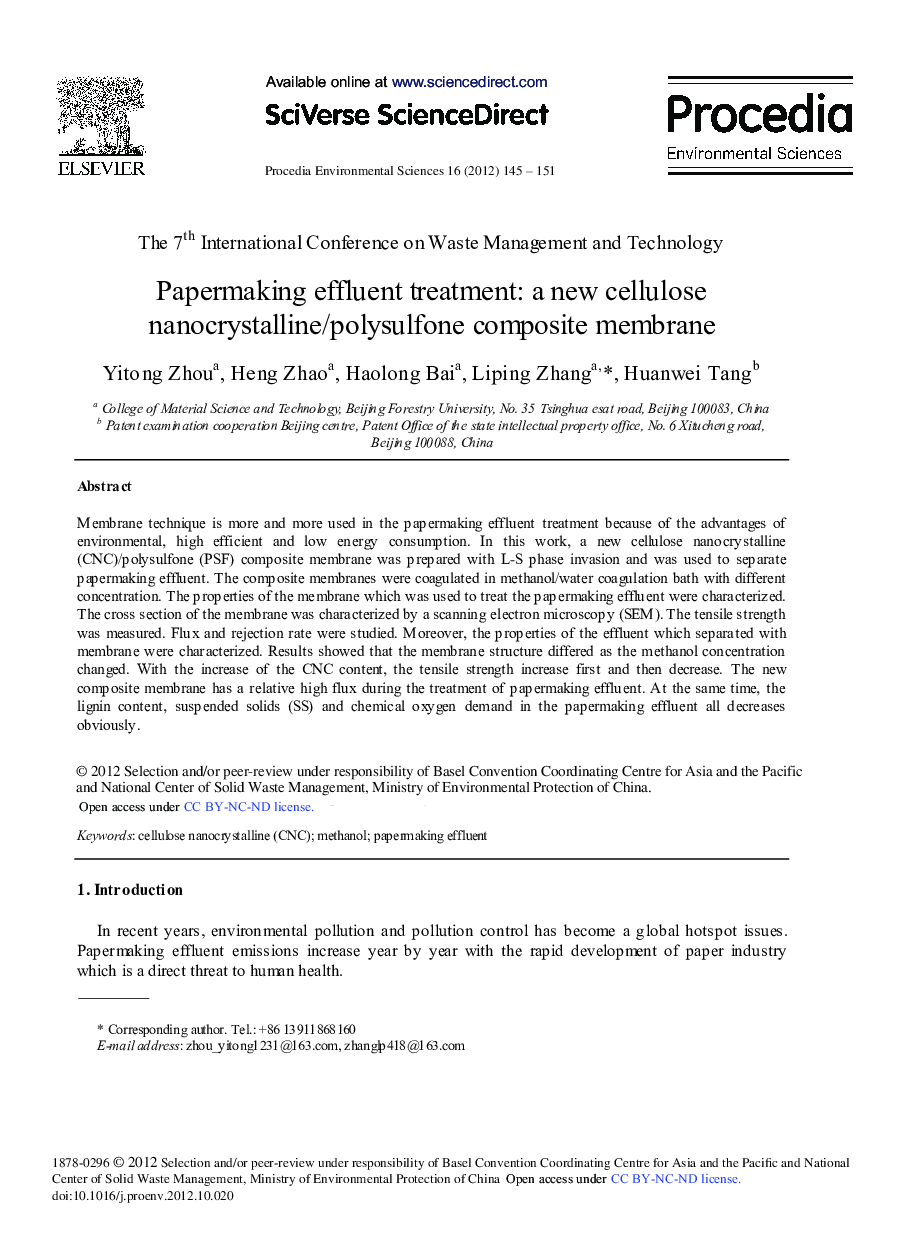| Article ID | Journal | Published Year | Pages | File Type |
|---|---|---|---|---|
| 4402648 | Procedia Environmental Sciences | 2012 | 7 Pages |
Membrane technique is more and more used in the papermaking effluent treatment because of the advantages of environmental, high efficient and low energy consumption. In this work, a new cellulose nanocrystalline (CNC)/polysulfone (PSF) composite membrane was prepared with L-S phase invasion and was used to separate papermaking effluent. The composite membranes were coagulated in methanol/water coagulation bath with different concentration. The properties of the membrane which was used to treat the papermaking effluent were characterized. The cross section of the membrane was characterized by a scanning electron microscopy (SEM). The tensile strength was measured. Flux and rejection rate were studied. Moreover, the properties of the effluent which separated with membrane were characterized. Results showed that the membrane structure differed as the methanol concentration changed. With the increase of the CNC content, the tensile strength increase first and then decrease. The new composite membrane has a relative high flux during the treatment of papermaking effluent. At the same time, the lignin content, suspended solids (SS) and chemical oxygen demand in the papermaking effluent all decreases obviously.
